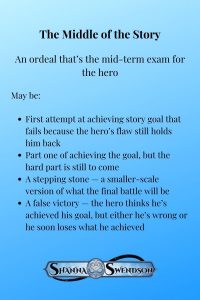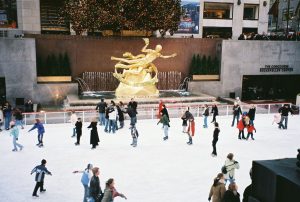movies
Prequels
I’ve been watching the Obi-Wan Kenobi series, and it’s made me think about some of the perils and benefits of “prequels,” stories that explore the backstory of something we’ve already seen, so that we already know the outcome for some of the major issues.
In this case, I thought the fact that we already know the fate of most of the main characters in the series, so we knew who would survive, made it bearable to watch. I don’t know if I could have handled the tension and suspense if I hadn’t known that most of the characters I cared most about would survive. Even knowing that, it got tense, and I had to repeat to myself “You already know when he/she dies, and this isn’t it.” I know that some viewers felt otherwise, like there was no point in watching it when you already know what will happen to the characters and what the outcome of everything will be.
I guess that comes down to whether you focus on the journey or the destination. Is the point of a story being surprised about the outcome or is it about the experience along the way and learning things about the world and the characters? I like surprises, but I think if enjoyment of a particular story hinges on being surprised by the outcome, there’s probably something lacking in that story. A really well-executed story should still be enjoyable even if you already know the outcome — even better, it should gain a layer when you already know all the revelations. I often refer to that as the “Shawshank Redemption Effect.” That movie becomes an entirely different story the second time you see it once you know what’s really going on. You get the same sort of thing with The Sixth Sense. It’s best to see it the first time without knowing the outcome, but once you know, it’s worth watching again because it becomes a different story. I suspect the “if I know how it ends, there’s no point” crowd don’t do a lot of rewatching or rereading, while rewatchers/rereaders are more focused on the journey than on the outcome.
I think a good prequel has this sort of effect on the later stories. In the Star Wars universe, Rogue One added a layer to the original movie that gave it a bit more meaning. The Obi-Wan Kenobi series adds a whole lot of emotion to that original movie when you factor in the histories it gives some of the characters — and it works even though George Lucas had none of it planned when he wrote that original movie. There’s a throwaway moment in the first movie that now will probably make me cry.
The prequel films were a bit less successful at that, in my opinion. They did flesh out some of the backstory and relationships, but about the only addition I get from having seen those when I watch the original trilogy is the weird sense that I’m seeing young Ewan McGregor looking out through Alec Guinness’s eyes. Lucas was trying to show how things came to be the way they were in the original trilogy, but I didn’t feel like there was much emotional depth, just a checklist of questions that needed to be answered. A prequel has to be about the journey, the experience, since the big-picture outcome is already known, but those prequels focused more on answering questions than on truly providing the journey and fleshing things out. I feel like I got more understanding about what made Darth Vader tick from his appearances in the Obi-Wan series than I did in watching his journey from childhood to adulthood in the prequel films.
I’ve written a few prequel things for my series and I have ideas for some more. It helps when I already have a pretty good sense of what was in the past before I write the “present,” so I don’t find myself frustrated by what I’ve already written when I go to address the past. I didn’t necessarily have the entire backstory of everything in Enchanted, Inc. made up before I wrote the first book, but I figured out a lot of it while I was writing that book. That’s made it a little easier to write shorter pieces taking place before the events of the first book.
I think after watching the Kenobi series I’m going to have to do an epic Star Wars rewatch to fit all the pieces together — probably not including the animated series because there’s just so much of that to deal with. I may wait until the fall so I can start watching a movie after dark and still finish before I’m falling asleep. Those movies really work best in the dark, and my living room stays light enough to be distracting until close to 9 p.m. these days. I either need to get blackout curtains or watch things that can be enjoyed in daylight.


 I have a weird fascination with sailing ships, so I love the idea of a fantasy with a tall ship. There’s something so romantic about the image. The centerpiece of my last real vacation, a trip to Chicago, was an excursion on a tall ship on Lake Michigan. I got to help hoist the sails (hard work!) and then experience traveling only under sail power. I’d been on smaller sailboats before, but not one that big on that big a body of water. I seem to live in entirely the wrong part of the world for the things that fascinate me. A person who feels most alive in a forest and who loves tall ships probably shouldn’t be living on the prairie.
I have a weird fascination with sailing ships, so I love the idea of a fantasy with a tall ship. There’s something so romantic about the image. The centerpiece of my last real vacation, a trip to Chicago, was an excursion on a tall ship on Lake Michigan. I got to help hoist the sails (hard work!) and then experience traveling only under sail power. I’d been on smaller sailboats before, but not one that big on that big a body of water. I seem to live in entirely the wrong part of the world for the things that fascinate me. A person who feels most alive in a forest and who loves tall ships probably shouldn’t be living on the prairie.